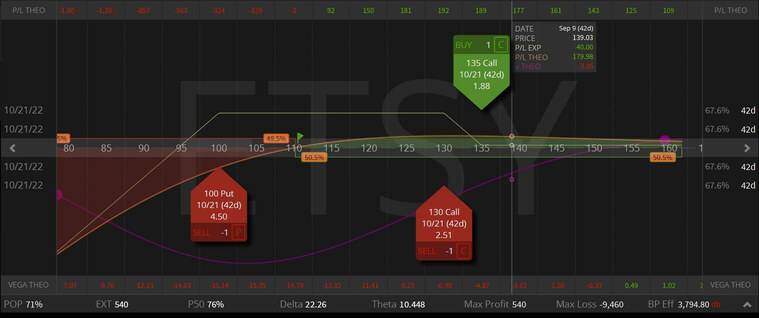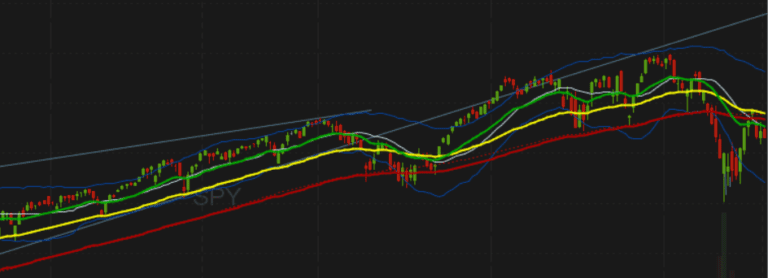How to Trade Iron Condors During Earnings
The images on this post are from the Tastyworks trading platform. I am a personal user of the tastyworks trading platform and believe it is a great choice for anyone who will be trading options, specifically selling options. They not only provide a high quality product but their support team is amazing. I have emailed them multiple times and receive an answer usually in less than 24 hours! If you have never tried it click this link and give it a try. This is my personal reference link for me and will support this blog.
Table of Contents
ToggleWhen it comes to playing stock earnings calls, it feels like a 50/50 coin flip! If you buy shares you only make money if the stock goes up, if you go short then the stock must go down for you to profit. It definitely doesn’t feel like a winning strategy, but it doesn’t have to be this way! This is where the Iron Condor comes into play. The name may sound awesome, but it is a pretty simple strategy! Let’s dig into how to set up this strategy to be profitable next earning season!
What are Options?
Investopedia.com defines options as “A stock option gives an investor the right, but not the obligation, to buy or sell a stock at an agreed-upon price and date. There are two types of options: puts, which is a bet that a stock will fall, or calls, which is a bet that a stock will rise. Because it has shares of stock (or a stock index) as its underlying asset, stock options are a form of equity derivative and may be called equity options.”
Options are a great way to supplement your investment portfolio. Buying stocks alone is a great way to make money when the market is going up, but sadly for all of us, the market doesn’t only go one direction.
By using options you can make money in any market condition, if you know what you are doing. If you are looking for more information on trading options I have other blog posts on this subject. Check out my post on cash secured puts, and covered calls. Both are great options for beginner option traders.
What is an Iron Condor?
We will be using both forms of options when “building” our iron condor. An iron condor consists of two opposing credit spreads that create a profit zone. We need a call side or bearish credit spread, and a put side or bullish credit spread. Both of these credit spreads will be sold OTM creating an “area” of profitability. If the price of the underlying stock stays between the short legs of your credit spreads, your credit spreads will expire worthless and you will keep the credit received as a profit. I’m sure this is very confusing to you, so look at the images below to see if this starts to make more sense to you.
As you can see in the pictures above we have 2 separate out-of-the-money credit spreads. You can also see that there is a profit zone approximately $10 wide. Now, this is a bit tighter of an iron condor than I usually like. I prefer to have wider strikes but the payoff is, I risk more money if I am wrong. With the setup pictured I am risking a $61 max loss for a max profit of $139.
Those sound like great odds but the probability of profit is only around 40%. By spreading out your credit spreads you can find a risk level you like. Tastyworks suggests a profit of ⅓ the distance of your credit spreads. So if your credit spreads are $3 apart (ie 95/98) you would want a profit of $1 or a profit of $100 and risk $200. See the picture below for an example.
What Expiration do I Use?
For this specific trade, right before earnings, you will be using the earliest expiring options. If the options are expiring in less than 2 days sometimes you will need to go out an extra week, as the option pricing will have your credit spreads too close to the ATM (at the money) strike prices.
If this is outside of earnings, doing an iron condor expiring in 30-45 days is the best option. You are going to want to set this up as close to the end of the day before earnings so that your Iron Condor is as centered as possible. Options expiring so soon will maximize your positive theta after the earnings call.
This also means that if you are wrong, you will have very few choices when it comes to defending your position. This is a position that you should set with a risk profile you are comfortable with. If the price moves outside of your short strikes you will most likely be facing close to max loss.
How Much should I Risk?
When it comes to earnings plays it is best to keep your risk in check. I tend to use around 1% or less for any single earnings trade. This of course will not make you rich overnight, but I find it to be fun and keeps me “in tune” with the market.
This is a defined risk trade, so you know your max loss at the time of entering the trade. You should also know your probability of profit, your trading platform should give you approximate percentages based on option delta. If you are looking for a trading platform, I suggest using Tastyworks, I believe their platform is one of the easier ones to use, and they allow anyone to trade any options they want.
Other platforms have risk tiers that can be pretty tough to get around so you can sell certain types of options. Of course, if you are going to be doing undefined risk trades, make sure you know what you are getting yourself into before you make your first trade. People blow up their accounts all the time!
Are there other Earnings Trades?
There are multiple types of earnings call trades that you can try out. Even in the realm of iron condors, you can adjust how far OTM you are with your credit spreads, depending on how bearish or bullish you are. As an example, you could sell an ATM put spread and a further OTM call spread if you are slightly bullish on an upcoming earnings call. This will give you more credit than an ATM credit spread alone, lowering your total risk.
There is also the option of just buying or selling a single option, just be careful when doing this. Earnings calls are notorious for huge moves in price that could leave your account in shambles if you risk too much on one trade. It is always a good idea to keep your risk in check, as nothing is a sure thing when it comes to trading options. My suggestion is to make small trades and see how things go. You will start to learn how options work without risking big money. Once you have a firm grasp on things you can start to risk more!
When it comes to options there are an endless amount of strategies you can have in your toolbox. The Iron Condor is just one of those strategies, and I hope you give it a try, as it takes any of the guesswork out of stock price movement. If you decide to try this strategy the next earnings season, please leave a comment below and let me know how it went! Good luck and happy trading!



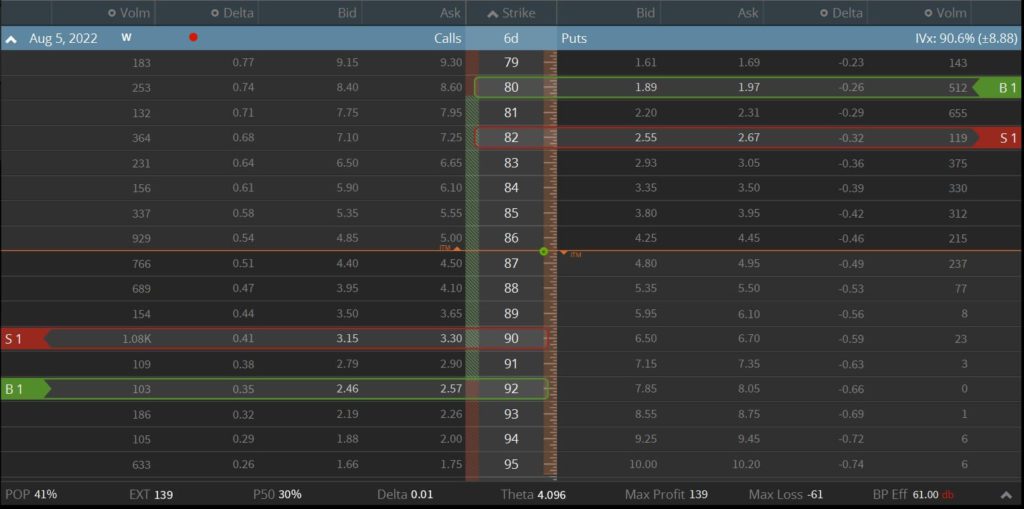
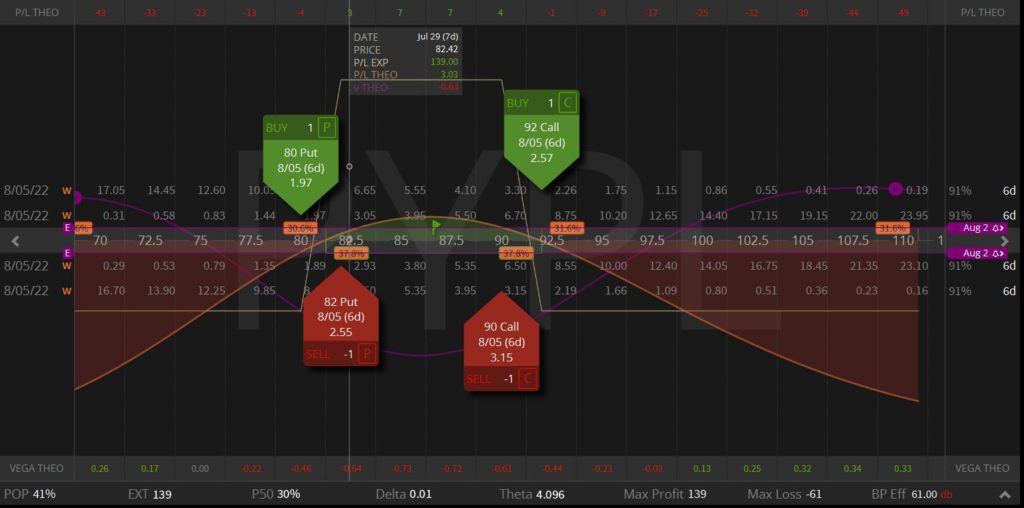
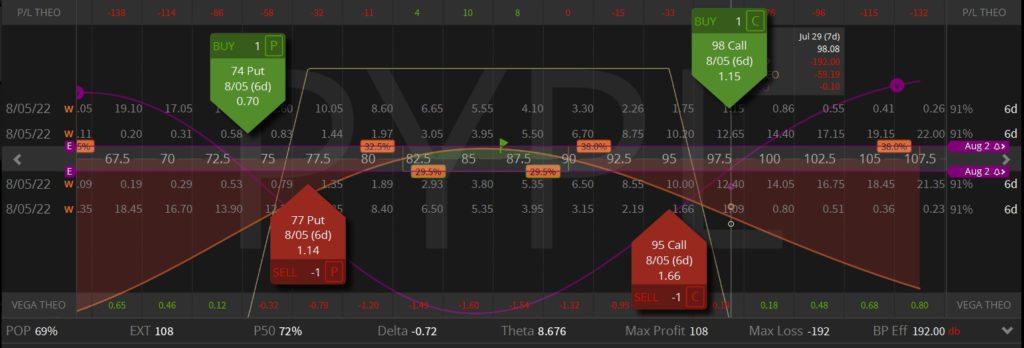

![Webull vs Robinhood [2023]: The Winner is Clear](https://pennypincher.blog/wp-content/uploads/2022/10/VS-2-768x432.png)
